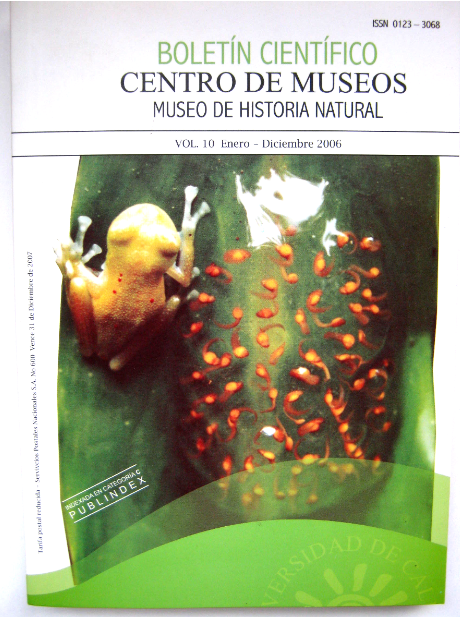Authors
Abstract
The finding and rediscovery of the butterfly Heliconius weymeri submarginatus (Fassl, 1912) are documented. Said butterfly had not been reported in the West of Colombia for almost a century when it was last collected in 1908 by the German naturalist Antón Fassl in Villa Elvira, on the Aguacatal River, in the Western Cordillera of the department of Valle del Cauca. Linares (1997) who had been studying the mimicry of H. cydno weymeri, was able to document the disappearance of H. weymeri submarginatus and of its mimetic co-model, the butterfly Elzunia Humboldt regalis in the river basin of the Aguacatal River, due to deforestation as well as to the agricultural and livestock border extension since the beginning of the last century on the Cali—Buenaventura route. When the mimetic co-model disappeared, the submarginatus form also disappeared, only remaining the typical form of H. cydno weymeri in the population of the Aguacatal River. Based on revisions of historical collections in museums, there is evidence that shows that the homozygotic mimetic form of submarginatus was still present in 1908, but no more were found. Nevertheless, the genes involved in the mimicry remained in the typical population, since Linares (1997) was able to reconstruct in the laboratory the extinct form of submarginatus, by means of crossings with the present forms of H. cydno weymeri and H. cydno weymeri f. gustavi, showing the evidence of the fast evolutionary change of a polymorphic mimetic population in habitats disturbed by humans. This study documents a new Mullerian type mimicry comparing the phenotypic frequencies between H. cydno weymeri f. submarginatus 14 with H. hecuba crispus, and Elzunia Humboldt regalis in the high basin of the Timba River in the limits with the Farallones National Natural Park of Cali in the Municipality of Jamundí, Valle del Cauca, comparing them with the Cerro Aguacatal locality Valle del Cauca. The Mullerian mimicry and the phenotypic frequencies are also compared in a Farallones population in Citará, Antioquia between H. hecuba crespinus with E. Humboldt descandollesi and susiana Megoleria susanna, where it is demonstrated that the Mullerian mimicry between H. hecuba and E. Humboldt is clinal throughout the Western Cordillera, with the yellow forms of E. Humboldt with E. hecuba crispus f. crespinus present in the populations located from Southwestern Risaralda to Antioquia in both slopes of the Western Cordillera in the departments of (Antioquia, Chocó, Risaralda), and the white forms of E. Humboldt with E. hecuba crispus f. crispus present in the populations located in Southwestern Risaralda up to the department of Cauca (Risaralda, Valle, Cauca) in both slopes of the Western Cordillera.

 PDF (Español)
PDF (Español)
 FLIP
FLIP


















